Home>Renovation & DIY>Home Renovation Guides>In What Order To Do Home Renovations
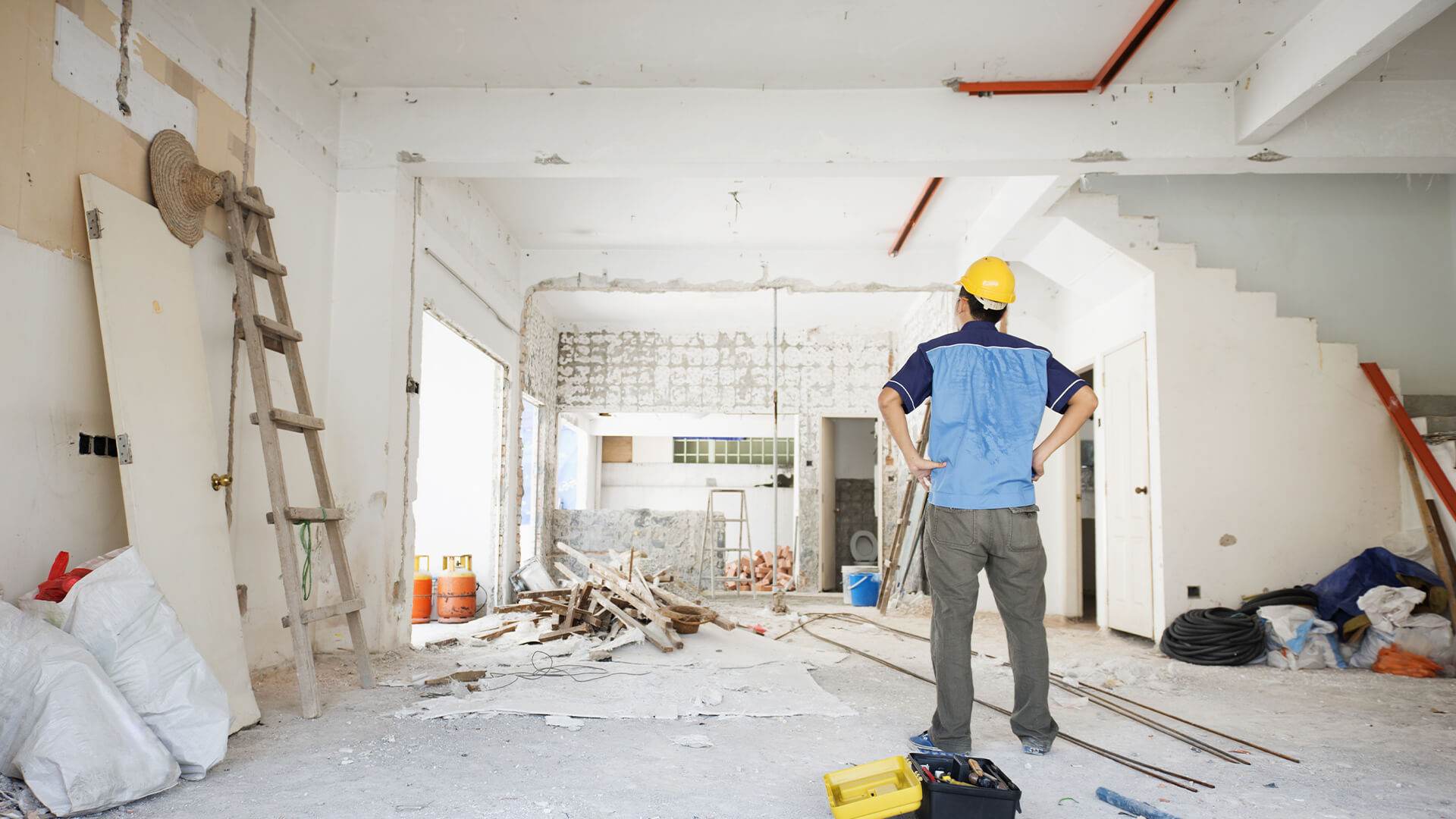

Home Renovation Guides
In What Order To Do Home Renovations
Modified: January 19, 2024
Discover the best order for your home renovations with our comprehensive guide. Get expert tips and advice for a successful home renovation project.
(Many of the links in this article redirect to a specific reviewed product. Your purchase of these products through affiliate links helps to generate commission for Storables.com, at no extra cost. Learn more)
Introduction
Welcome to the exciting world of home renovations! Whether you’re revamping a fixer-upper or simply looking to breathe new life into your living space, embarking on a home renovation journey is a thrilling and rewarding experience. However, it can also be overwhelming without proper planning and organization. This comprehensive guide will walk you through the step-by-step process of home renovations, providing valuable insights and expert tips to help you navigate this transformative endeavor with confidence.
From assessing your home’s needs to setting a realistic budget, obtaining permits, and tackling the various stages of renovation, each phase plays a crucial role in achieving your desired outcome. By understanding the order in which home renovations should ideally unfold, you can streamline the process and minimize unexpected challenges.
Whether you’re envisioning a stunning kitchen remodel, a luxurious bathroom upgrade, or a complete home makeover, this guide will serve as your roadmap, offering valuable guidance at every turn. So, roll up your sleeves, unleash your creativity, and get ready to embark on an exhilarating journey toward enhancing your home’s functionality, aesthetic appeal, and overall value.
Key Takeaways:
- Assess, plan, and communicate! Before starting home renovations, assess your needs, set a realistic budget, and communicate openly with professionals to ensure a successful and rewarding transformation.
- Attention to detail is key! From demolition to final touches, prioritize precision, flexibility, and proactive problem-solving to create a home that reflects your unique style and practical needs.
Read more: What Order To Do Home Repairs
Assessing Your Home
Before diving into the renovation process, it’s essential to conduct a thorough assessment of your home. Start by evaluating the current condition of each room and identifying areas that require attention. Take note of any structural issues, outdated features, or functional shortcomings that need to be addressed. Consider factors such as natural light, traffic flow, and overall usability to gain a comprehensive understanding of your home’s strengths and weaknesses.
Assessing your home also involves envisioning the desired outcome of the renovation. Whether you aspire to create an open-concept living space, modernize the kitchen, or transform the bathroom into a spa-like retreat, clearly defining your goals will guide the entire renovation process. Take measurements, create rough sketches, and gather inspiration from home improvement magazines, websites, and social media platforms to refine your vision.
Furthermore, consider the long-term implications of the renovation. Will the changes align with your lifestyle and future needs? Assessing your home involves thinking beyond the present and envisioning how the renovations will enhance your daily life and contribute to the overall value of your property.
Engage in open discussions with family members or housemates to gather diverse perspectives and ensure that everyone’s needs and preferences are taken into account. By involving all stakeholders in the assessment phase, you can cultivate a shared vision for the renovation and lay the groundwork for a harmonious and collaborative process.
Remember, the assessment phase sets the stage for the entire renovation journey. By thoroughly evaluating your home’s current state, defining your renovation goals, and considering the long-term implications, you’ll lay a solid foundation for the exciting transformations that lie ahead.
Setting a Budget
Establishing a realistic budget is a pivotal step in the home renovation process. Whether you’re planning a minor refresh or a full-scale remodel, determining the financial parameters of your project will guide decision-making and ensure that your vision aligns with practical considerations. Start by conducting thorough research to understand the average costs associated with your desired renovations. This may involve consulting with contractors, visiting home improvement stores, and exploring online resources to gather pricing information for materials, labor, and other essential components.
When setting a budget, it’s crucial to account for unexpected expenses and contingencies. Building a contingency fund into your budget will provide a safety net for unforeseen challenges or additional requirements that may arise during the renovation process, thus minimizing the risk of budget overruns.
Additionally, consider the potential return on investment (ROI) for the renovations you’re planning. While it’s important to create a space that enhances your quality of life, it’s also wise to assess how the renovations may impact the overall value of your home. Certain upgrades, such as kitchen remodels and bathroom renovations, often yield significant returns when it comes to property resale value. Understanding the potential ROI can inform your budgeting decisions and help prioritize areas of focus within your home.
Furthermore, be mindful of your financial limitations and avoid overextending yourself. Striking a balance between your renovation aspirations and financial reality is essential for a successful and stress-free process. If necessary, consider phased renovations to spread out costs over time while still making meaningful progress toward your ultimate vision.
Lastly, maintain open communication with your chosen contractors or renovation professionals throughout the budgeting process. By aligning your budget with realistic project estimates and seeking input from experienced professionals, you can make informed decisions and ensure that your financial plan supports the successful realization of your renovation goals.
Planning and Design
Once you’ve assessed your home and established a budget, it’s time to delve into the exciting phase of planning and design. This stage is where your vision begins to take shape, and careful consideration of layout, functionality, and aesthetic elements comes into play.
Start by creating a detailed plan that outlines the specific renovations you intend to undertake. Whether it’s reconfiguring the kitchen layout, expanding a living area, or adding a new bathroom, a well-crafted plan serves as the roadmap for the entire project. Consider consulting with a professional designer or architect to translate your ideas into tangible blueprints, ensuring that the proposed changes align with your home’s structural integrity and building codes.
During the planning and design phase, meticulous attention to detail is paramount. Consider factors such as traffic flow, spatial efficiency, and the seamless integration of design elements. Whether you’re aiming for a contemporary, minimalist look or a cozy, traditional ambiance, the design phase is where you’ll define the overarching style and aesthetic of your renovated space.
Furthermore, explore the vast array of materials, finishes, and fixtures available for your renovations. From flooring and countertops to lighting and hardware, the selection of materials plays a pivotal role in bringing your design vision to life. Consider the durability, maintenance requirements, and visual appeal of each element to make informed choices that align with your lifestyle and aesthetic preferences.
Engage in open dialogue with your design professionals and contractors, leveraging their expertise to refine your plans and optimize the functionality and visual impact of the proposed renovations. Their insights can offer valuable perspectives on design trends, space optimization, and cost-effective solutions, enhancing the overall quality of your project.
Ultimately, the planning and design phase sets the stage for the transformative renovations that lie ahead. By investing time and thought into this crucial stage, you’ll lay the groundwork for a seamless and rewarding renovation experience, ensuring that your home reflects your unique vision and lifestyle.
Obtaining Permits
Before commencing any major renovations, it’s essential to navigate the regulatory landscape and secure the necessary permits and approvals. While the permit requirements vary based on location and the scope of the project, obtaining the appropriate permits is a critical step in ensuring that your renovations comply with building codes and regulations.
Start by researching the specific permit requirements for your area. This may involve contacting your local building department or consulting with a qualified contractor familiar with the permitting process. Understanding the permit prerequisites for your renovations, including any inspections or documentation needed, will help you navigate this aspect of the project with confidence.
Next, prepare a comprehensive permit application that outlines the details of your proposed renovations. This may include architectural plans, structural specifications, and other relevant documentation required by the permitting authority. Accuracy and thoroughness in your permit application are crucial, as incomplete or inaccurate submissions can lead to delays and complications in the approval process.
Upon submitting your permit application, be prepared to address any inquiries or requests for additional information from the permitting authority. Timely and transparent communication throughout this phase can expedite the approval process and ensure that your renovations proceed according to schedule.
Once the permits are granted, it’s important to display them prominently at the renovation site as required by local regulations. This serves as a visual indication of compliance and may also facilitate inspections by building officials at various stages of the project.
Adhering to the permit requirements not only ensures legal compliance but also provides assurance that your renovations meet safety and quality standards. By obtaining the necessary permits, you can embark on your home renovations with the confidence that your project is authorized and aligned with the established regulations, setting the stage for a successful and trouble-free transformation of your living space.
Read more: What Is Home Renovation
Demolition
As you embark on the exhilarating journey of home renovations, the demolition phase marks the transformative beginning of your project. Whether you’re revamping a single room or undertaking a comprehensive overhaul, the demolition stage sets the tone for the exciting changes that lie ahead.
Prior to commencing any demolition work, it’s essential to take necessary precautions to ensure safety and minimize disruptions. If you’re working with a professional contractor, they will coordinate the logistics of the demolition process, including securing the site, implementing safety measures, and adhering to local regulations and best practices.
During the demolition phase, meticulous attention to detail is crucial. Whether it’s removing outdated fixtures, tearing down walls, or clearing out existing structures, the goal is to execute the demolition with precision and efficiency. Proper disposal of debris and materials is also a key consideration, as responsible waste management contributes to a clean and organized work environment.
It’s important to anticipate potential challenges and unexpected discoveries during the demolition process. Hidden structural issues, outdated wiring, or plumbing complications may surface as existing components are removed. Flexibility and proactive problem-solving are essential in addressing these unforeseen obstacles while maintaining the project’s momentum.
Furthermore, if you’re taking a hands-on approach to the demolition, ensure that you have the necessary tools, protective gear, and a clear understanding of the tasks at hand. Safety goggles, gloves, and sturdy footwear are essential for personal protection, while the use of appropriate demolition tools and techniques will facilitate efficient progress and minimize potential hazards.
Throughout the demolition phase, maintain open communication with your renovation team or contractors, addressing any concerns or unexpected findings promptly. By fostering a collaborative and proactive approach, you can navigate the demolition process with confidence and set the stage for the subsequent stages of your home renovations.
Ultimately, the demolition phase marks the beginning of the exciting transformation that awaits your living space. By approaching this stage with careful planning, attention to safety, and a spirit of adaptability, you’ll pave the way for a successful and rewarding renovation journey.
Structural Work
Undertaking structural work during a home renovation is a pivotal phase that lays the foundation for the transformation of your living space. Whether it involves reinforcing load-bearing walls, modifying room layouts, or addressing foundational issues, the structural work sets the stage for the functional and aesthetic enhancements that follow.
Engage the expertise of qualified professionals, such as structural engineers and experienced contractors, to assess the structural integrity of your home and develop a comprehensive plan for the necessary modifications. Their insights and recommendations are invaluable in ensuring that the structural changes align with safety standards and building codes.
During the structural work phase, meticulous attention to detail and adherence to engineering specifications are paramount. This may involve reinforcing or replacing structural elements, addressing any signs of deterioration or instability, and optimizing the overall stability and resilience of your home’s framework.
If your renovation plans include room expansions or modifications to load-bearing walls, it’s essential to coordinate closely with the professionals overseeing the structural work. This collaborative approach ensures that the proposed changes are executed with precision and in accordance with the approved plans and engineering requirements.
Furthermore, structural work often involves coordination with other renovation aspects, such as plumbing and electrical modifications. Open communication and seamless collaboration among the various teams working on your project are essential to ensure that the structural modifications align harmoniously with the overall renovation objectives.
As the structural work progresses, be prepared for potential adjustments to the project timeline and budget, especially if unforeseen structural issues are uncovered. Flexibility and proactive problem-solving are key in addressing any unexpected challenges while maintaining the project’s momentum.
Ultimately, the structural work phase forms the solid framework upon which the rest of your renovations will unfold. By prioritizing safety, precision, and collaboration, you’ll set the stage for a successful and transformative renovation journey that enhances the functionality and longevity of your home.
Plumbing and Electrical
As you embark on the intricate process of home renovations, addressing the plumbing and electrical systems is a critical phase that underpins the functionality and safety of your living space. Whether you’re upgrading fixtures, reconfiguring layouts, or modernizing your home’s infrastructure, the plumbing and electrical work plays a pivotal role in the overall success of your project.
Engage the expertise of licensed professionals to assess the existing plumbing and electrical systems, ensuring compliance with current codes and safety standards. Their insights and recommendations will guide the necessary modifications and enhancements to optimize the performance and reliability of these essential components.
When it comes to plumbing upgrades, consider factors such as water efficiency, fixture placements, and drainage considerations. Whether you’re revamping a bathroom, installing a new kitchen sink, or reconfiguring utility areas, precision and attention to detail are essential in ensuring optimal functionality and longevity of the plumbing infrastructure.
Similarly, electrical work encompasses a wide range of considerations, including lighting upgrades, power outlet placements, and the integration of smart home technologies. Collaborate closely with qualified electricians to devise a comprehensive plan that aligns with your renovation goals while prioritizing safety, energy efficiency, and seamless integration of modern electrical features.
Throughout the plumbing and electrical phase, proactive communication with your renovation team or contractors is essential. Address any specific requirements, preferences, or potential challenges related to the plumbing and electrical work, ensuring that the proposed modifications align harmoniously with the overall renovation objectives.
Furthermore, be prepared for potential adjustments to the project timeline and budget, especially if unforeseen complexities arise during the plumbing and electrical work. Flexibility and proactive problem-solving are key in addressing any unexpected challenges while maintaining the project’s momentum.
By prioritizing the meticulous execution of plumbing and electrical upgrades, you’ll lay the groundwork for a home that not only exudes modern functionality and convenience but also prioritizes safety and efficiency. This phase sets the stage for the seamless integration of essential systems that enhance the overall quality of your living space.
Start with structural repairs, then focus on essential systems like plumbing and electrical. Next, work on the interior layout before finishing with cosmetic upgrades.
Insulation and Drywall
As you progress through the various stages of home renovations, the installation of insulation and drywall represents a pivotal phase that contributes to the comfort, energy efficiency, and aesthetic appeal of your living space. From optimizing thermal performance to creating smooth, uniform surfaces, the insulation and drywall work significantly impacts the overall quality of your home’s interior environment.
When it comes to insulation, consider the specific needs of each area in your home. Whether it’s attics, walls, or floors, the selection and installation of insulation materials play a crucial role in regulating indoor temperatures, reducing energy consumption, and enhancing acoustic comfort. Engage with insulation specialists to assess the insulation requirements for your home, taking into account factors such as climate, building codes, and energy efficiency goals.
Additionally, the installation of drywall marks a transformative step in refining the visual and tactile aspects of your living space. From concealing structural elements to creating smooth, paint-ready surfaces, the meticulous installation and finishing of drywall contribute to the overall aesthetic appeal and functionality of your home’s interior.
During the insulation and drywall phase, precision and attention to detail are paramount. Whether it’s addressing insulation gaps, ensuring proper vapor barriers, or achieving seamless drywall finishes, the expertise of qualified professionals is instrumental in executing these tasks with precision and efficiency.
Furthermore, proactive communication with your renovation team or contractors is essential during this phase. Address any specific requirements, preferences, or potential challenges related to insulation and drywall installation, ensuring that the proposed modifications align harmoniously with the overall renovation objectives.
Be prepared for potential adjustments to the project timeline and budget, especially if unforeseen complexities arise during the insulation and drywall work. Flexibility and proactive problem-solving are key in addressing any unexpected challenges while maintaining the project’s momentum.
By prioritizing the meticulous installation of insulation and drywall, you’ll contribute to a home environment that embodies both comfort and visual appeal. This phase sets the stage for the seamless integration of essential components that enhance the overall quality and functionality of your living space.
Flooring
As you progress through the transformative journey of home renovations, the selection and installation of flooring materials represent a pivotal phase that significantly influences the aesthetic appeal, functionality, and overall ambiance of your living space. Whether you’re envisioning sleek hardwood floors, luxurious carpeting, or stylish tile designs, the flooring choices you make play a pivotal role in shaping the character and comfort of your home.
Start by considering the specific requirements and preferences for each area of your home. High-traffic areas such as entryways, kitchens, and living rooms may benefit from durable and easy-to-maintain flooring options, while bedrooms and private spaces may lend themselves to softer, more luxurious materials. Engage with flooring specialists to explore a wide range of materials, finishes, and styles, ensuring that your selections align with both aesthetic and practical considerations.
When it comes to installation, precision and attention to detail are crucial. Whether it’s laying intricate tile patterns, achieving seamless hardwood transitions, or ensuring uniform carpet installations, the expertise of qualified flooring professionals is instrumental in executing these tasks with precision and efficiency.
During the flooring phase, proactive communication with your renovation team or contractors is essential. Address any specific requirements, preferences, or potential challenges related to flooring installation, ensuring that the proposed modifications align harmoniously with the overall renovation objectives.
Be prepared for potential adjustments to the project timeline and budget, especially if unforeseen complexities arise during the flooring installation. Flexibility and proactive problem-solving are key in addressing any unexpected challenges while maintaining the project’s momentum.
By prioritizing the meticulous selection and installation of flooring materials, you’ll contribute to a home environment that exudes both visual appeal and functional comfort. This phase sets the stage for the seamless integration of flooring elements that enhance the overall quality and ambiance of your living space, reflecting your unique style and lifestyle preferences.
Cabinetry and Countertops
Embarking on the journey of home renovations presents an opportunity to transform your living space, and the selection and installation of cabinetry and countertops play a pivotal role in shaping the functionality, organization, and visual appeal of key areas such as kitchens, bathrooms, and storage spaces. Whether you’re envisioning sleek, modern cabinetry or timeless, elegant countertops, these elements contribute to the overall aesthetic and practical aspects of your home.
Start by carefully assessing the specific storage needs and design preferences for each area. In the kitchen, consider factors such as storage capacity, organization features, and the seamless integration of appliances. For bathrooms, prioritize functional storage solutions that complement the overall design aesthetic. Engage with cabinetry specialists to explore a wide range of materials, finishes, and configurations, ensuring that your selections align with both aesthetic and practical considerations.
Similarly, when it comes to countertops, factors such as durability, maintenance requirements, and visual appeal are paramount. Whether you prefer the timeless elegance of natural stone, the versatility of engineered quartz, or the sleek simplicity of solid surfaces, the selection of countertops significantly impacts the functionality and visual impact of your kitchen and bathroom spaces.
During the installation phase, precision and attention to detail are crucial. Whether it’s customizing cabinetry configurations to maximize storage efficiency, ensuring seamless countertop installations, or integrating functional accessories, the expertise of qualified professionals is instrumental in executing these tasks with precision and efficiency.
Throughout the cabinetry and countertop phase, proactive communication with your renovation team or contractors is essential. Address any specific requirements, preferences, or potential challenges related to the installation, ensuring that the proposed modifications align harmoniously with the overall renovation objectives.
Be prepared for potential adjustments to the project timeline and budget, especially if unforeseen complexities arise during the installation process. Flexibility and proactive problem-solving are key in addressing any unexpected challenges while maintaining the project’s momentum.
By prioritizing the meticulous selection and installation of cabinetry and countertops, you’ll contribute to a home environment that embodies both functional efficiency and visual elegance. This phase sets the stage for the seamless integration of essential elements that enhance the overall quality and organization of your living space, reflecting your unique style and practical needs.
Painting and Wallpaper
As you progress through the transformative journey of home renovations, the application of paint and wallpaper represents a pivotal phase that significantly influences the aesthetic appeal, ambiance, and overall character of your living space. Whether you’re envisioning vibrant accent walls, serene color palettes, or intricate wallpaper designs, the choices you make in this phase play a pivotal role in shaping the visual impact and personality of your home.
Start by carefully considering the desired atmosphere and visual themes for each area of your home. Whether it’s creating a cozy and inviting living room, a tranquil and rejuvenating bedroom, or a vibrant and functional kitchen space, the selection of paint colors and wallpaper designs can profoundly impact the mood and style of each room. Engage with interior design specialists to explore a wide range of color palettes, finishes, and wallpaper patterns, ensuring that your selections align with both aesthetic and thematic considerations.
When it comes to painting, precision and attention to detail are crucial. Whether it’s achieving seamless color transitions, applying intricate decorative finishes, or addressing surface preparation, the expertise of qualified painting professionals is instrumental in executing these tasks with precision and efficiency.
Similarly, the installation of wallpaper requires meticulous attention to pattern alignment, seam concealment, and surface preparation. Engage with experienced wallpaper installers to ensure that the chosen designs are applied with precision and care, creating a visually stunning and cohesive backdrop for your living spaces.
During the painting and wallpaper phase, proactive communication with your renovation team or contractors is essential. Address any specific requirements, preferences, or potential challenges related to the application, ensuring that the proposed modifications align harmoniously with the overall renovation objectives.
Be prepared for potential adjustments to the project timeline and budget, especially if unforeseen complexities arise during the painting and wallpaper installation. Flexibility and proactive problem-solving are key in addressing any unexpected challenges while maintaining the project’s momentum.
By prioritizing the meticulous selection and application of paint and wallpaper, you’ll contribute to a home environment that embodies both visual harmony and thematic coherence. This phase sets the stage for the seamless integration of design elements that enhance the overall aesthetics and ambiance of your living space, reflecting your unique style and thematic preferences.
Fixtures and Appliances
As you navigate the exciting phase of home renovations, the selection and installation of fixtures and appliances play a pivotal role in enhancing the functionality, convenience, and visual appeal of your living space. Whether you’re upgrading kitchen appliances, installing stylish faucets, or adding decorative lighting fixtures, these elements contribute to the overall efficiency and aesthetic impact of your home.
Start by carefully assessing the specific needs and design preferences for each area. In the kitchen, consider factors such as energy efficiency, cooking preferences, and the seamless integration of modern appliances. For bathrooms, prioritize water-saving fixtures, space optimization, and the seamless coordination of design elements. Engage with fixture and appliance specialists to explore a wide range of options, ensuring that your selections align with both functional and aesthetic considerations.
When it comes to appliance installation, precision and attention to detail are crucial. Whether it’s ensuring seamless integration of built-in appliances, optimizing ventilation and utility connections, or addressing space considerations, the expertise of qualified professionals is instrumental in executing these tasks with precision and efficiency.
Similarly, the installation of fixtures such as faucets, lighting, and decorative elements requires meticulous attention to design cohesion, functionality, and installation precision. Engage with experienced installers to ensure that the chosen fixtures are integrated seamlessly, enhancing both the visual and functional aspects of your living spaces.
During the fixture and appliance phase, proactive communication with your renovation team or contractors is essential. Address any specific requirements, preferences, or potential challenges related to the installation, ensuring that the proposed modifications align harmoniously with the overall renovation objectives.
Be prepared for potential adjustments to the project timeline and budget, especially if unforeseen complexities arise during the installation process. Flexibility and proactive problem-solving are key in addressing any unexpected challenges while maintaining the project’s momentum.
By prioritizing the meticulous selection and installation of fixtures and appliances, you’ll contribute to a home environment that embodies both functional efficiency and visual elegance. This phase sets the stage for the seamless integration of essential elements that enhance the overall quality and convenience of your living space, reflecting your unique style and practical needs.
Final Touches
As you near the completion of your home renovations, the final touches phase represents a pivotal stage where attention to detail, personalization, and refinement come together to elevate the overall ambiance and functionality of your living space. From adding decorative elements to fine-tuning the visual cohesion of each room, the final touches phase allows you to infuse your unique style and personality into your home.
Start by carefully assessing the specific areas where additional details can enhance the visual impact and functionality of your living space. This may involve adding decorative moldings, integrating accent lighting, or incorporating personalized elements that reflect your individual taste and lifestyle preferences.
Consider the potential for integrating smart home technologies, such as programmable thermostats, automated lighting, or integrated entertainment systems, to enhance the modern functionality and energy efficiency of your home. Engage with technology specialists to explore options that align with your lifestyle and convenience needs.
When it comes to decorative elements, such as artwork, mirrors, and accessories, precision in placement and visual cohesion are crucial. Whether it’s creating focal points, enhancing natural light, or infusing artistic flair, the expertise of interior design professionals can guide the thoughtful integration of these final touches.
During the final touches phase, proactive communication with your renovation team or contractors is essential. Address any specific requirements, preferences, or potential challenges related to the installation, ensuring that the proposed modifications align harmoniously with the overall renovation objectives.
Be prepared for potential adjustments to the project timeline and budget, especially if unforeseen complexities arise during the installation process. Flexibility and proactive problem-solving are key in addressing any unexpected challenges while maintaining the project’s momentum.
By prioritizing the meticulous selection and integration of final touches, you’ll contribute to a home environment that embodies both personalized elegance and modern functionality. This phase sets the stage for the seamless integration of essential elements that enhance the overall quality and visual appeal of your living space, reflecting your unique style and practical needs.
Conclusion
Congratulations on successfully navigating the intricate and transformative journey of home renovations. As you reflect on the culmination of this exhilarating process, it’s evident that your dedication to enhancing your living space has resulted in a home that exudes both functionality and personalized elegance. From the initial assessments to the final touches, each phase has contributed to the seamless integration of essential elements that elevate the overall quality and visual appeal of your home.
Throughout this renovation journey, meticulous planning, open communication, and collaboration with experienced professionals have been instrumental in realizing your vision. The careful selection of materials, the precision of installation, and the thoughtful attention to detail have collectively shaped a living environment that reflects your unique style, practical needs, and aesthetic preferences.
As you settle into your newly renovated home, you’ll undoubtedly appreciate the enhanced functionality, modern conveniences, and visual harmony that define each space. The seamless integration of fixtures, appliances, and personalized elements has created an environment that not only meets your daily needs but also invites you to revel in the comfort and elegance of your revitalized living space.
Moreover, the value of your home has been significantly enhanced, both in terms of its aesthetic appeal and its potential for future resale. The careful consideration of energy-efficient features, modern amenities, and timeless design elements has positioned your home as a sanctuary of contemporary living, poised to meet the needs of today and tomorrow.
As you embark on this new chapter in your revitalized home, may the thoughtful planning, attention to detail, and personalized touches continue to inspire and enrich your daily experiences. Your home now stands as a testament to the transformative power of renovations, embodying the seamless fusion of functionality, elegance, and individuality.
With the completion of this renovation journey, your living space has been reinvented to reflect your unique style and practical needs, offering a harmonious blend of modern convenience and timeless elegance. As you embrace the comfort and beauty of your revitalized home, may it serve as a testament to the transformative power of thoughtful renovations, enriching your everyday experiences and inspiring a renewed sense of pride in your living space.
Frequently Asked Questions about In What Order To Do Home Renovations
Was this page helpful?
At Storables.com, we guarantee accurate and reliable information. Our content, validated by Expert Board Contributors, is crafted following stringent Editorial Policies. We're committed to providing you with well-researched, expert-backed insights for all your informational needs.



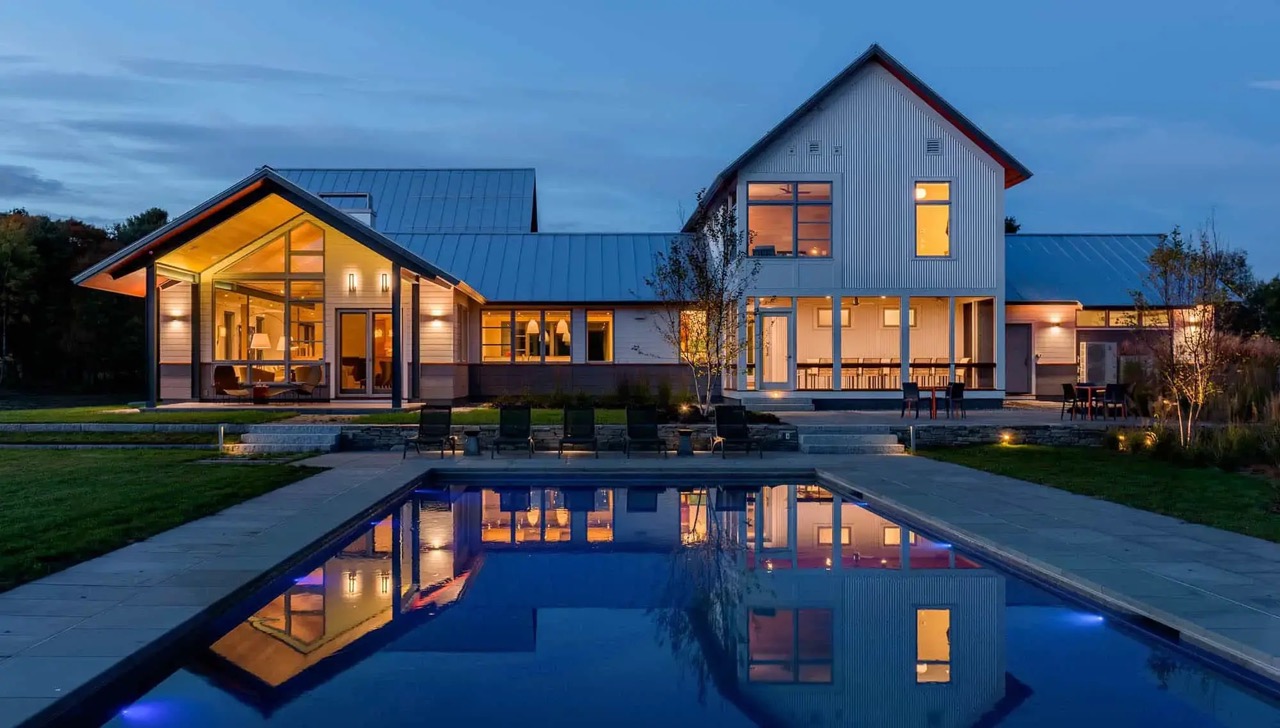
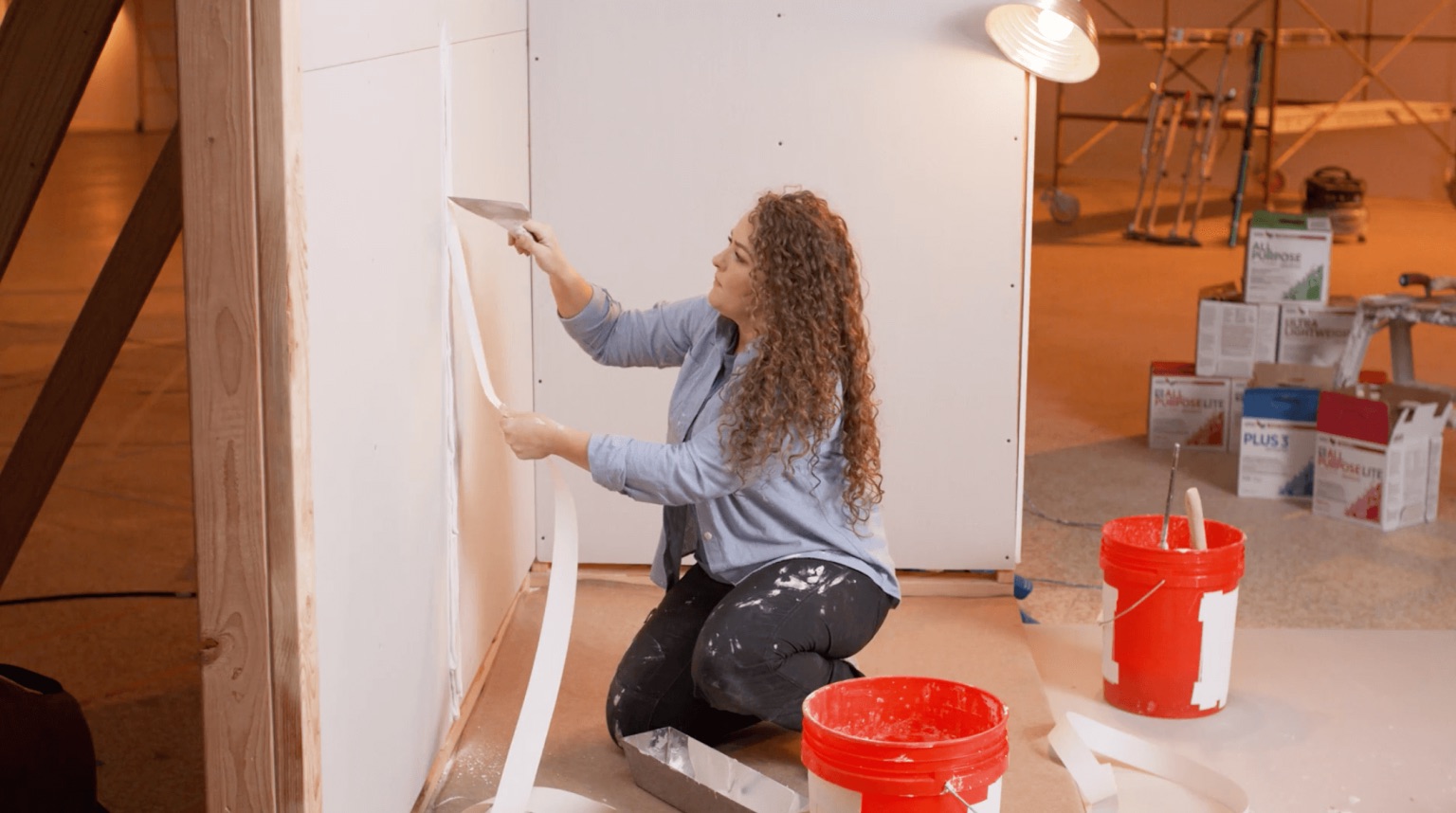

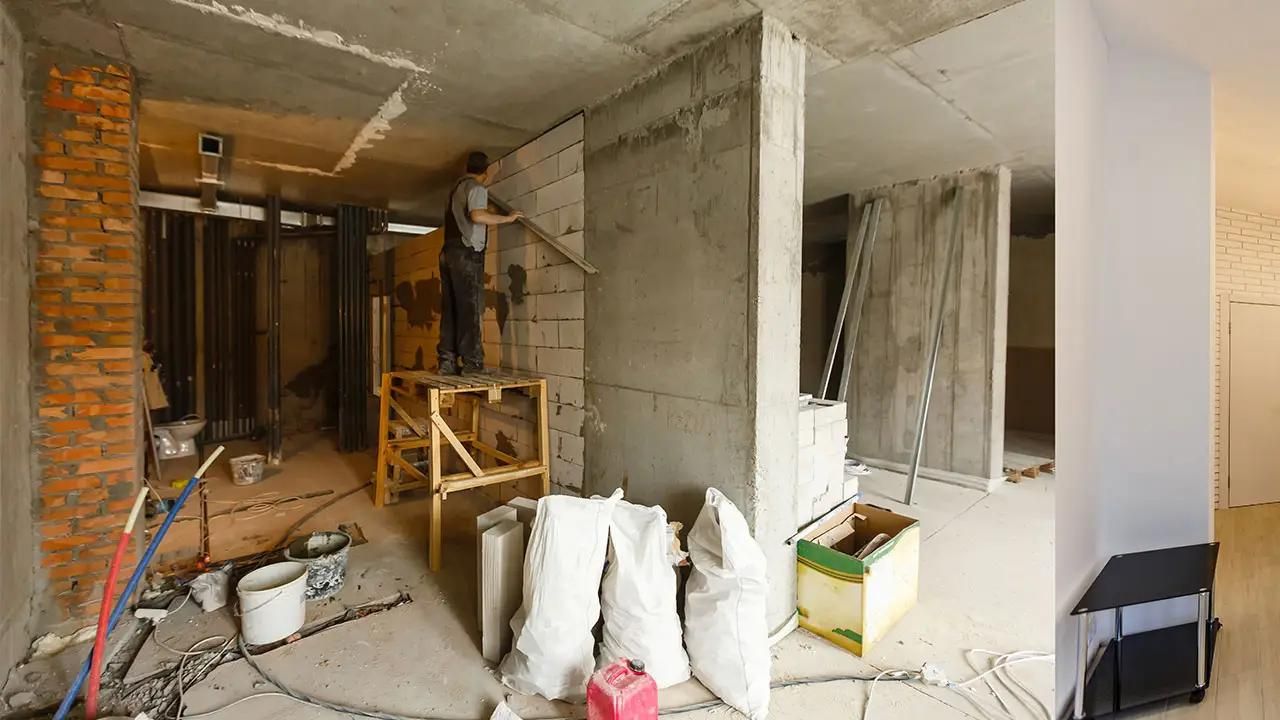
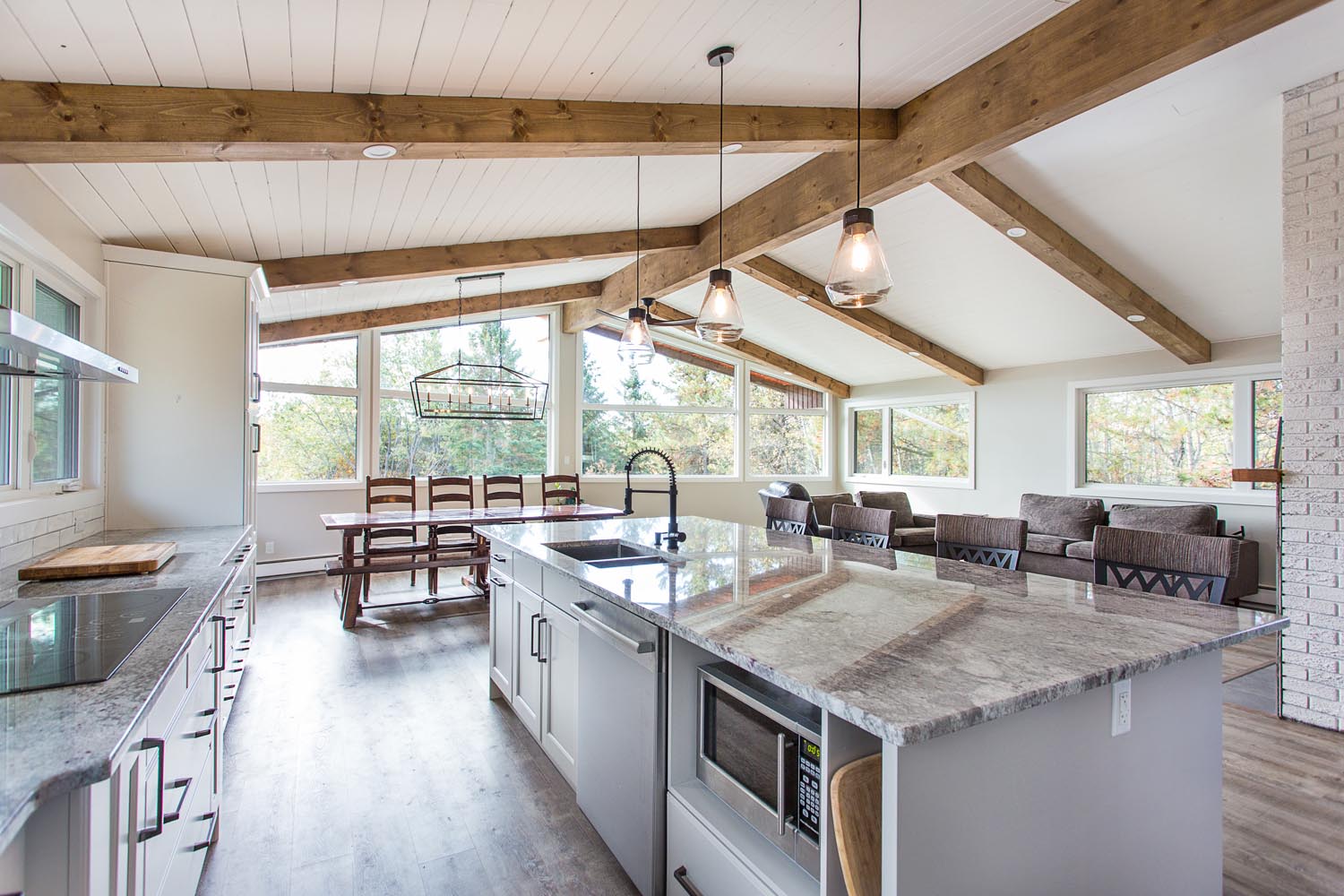
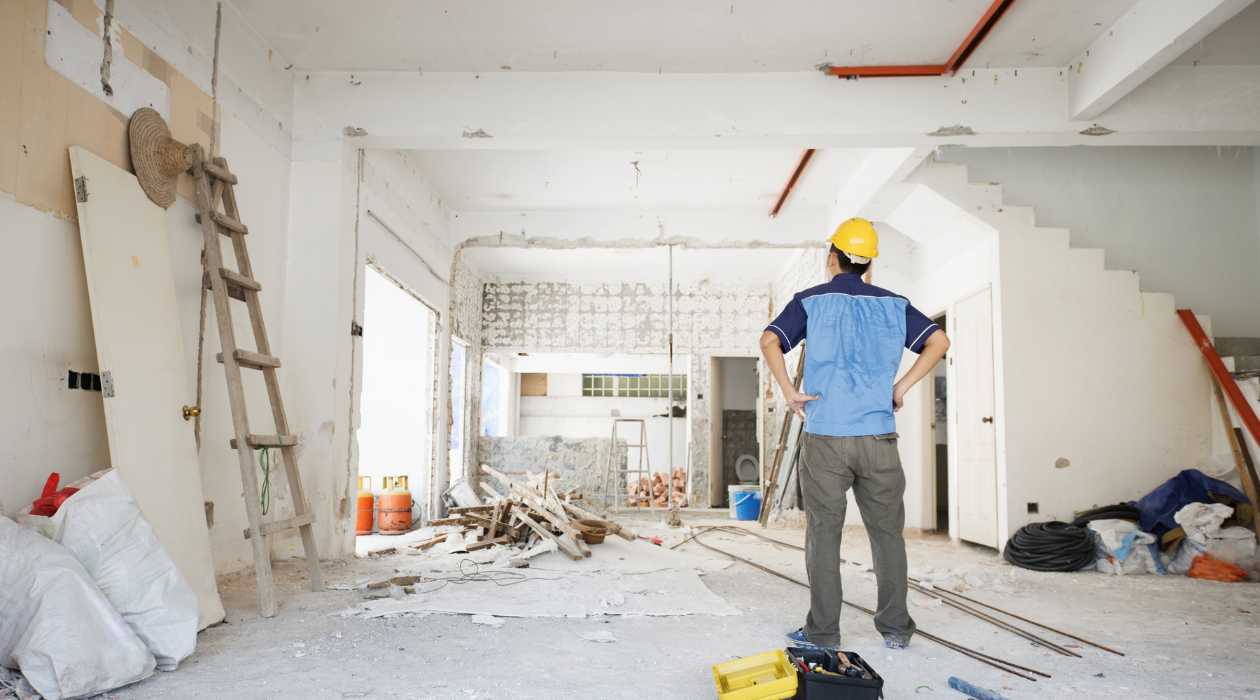




0 thoughts on “In What Order To Do Home Renovations”